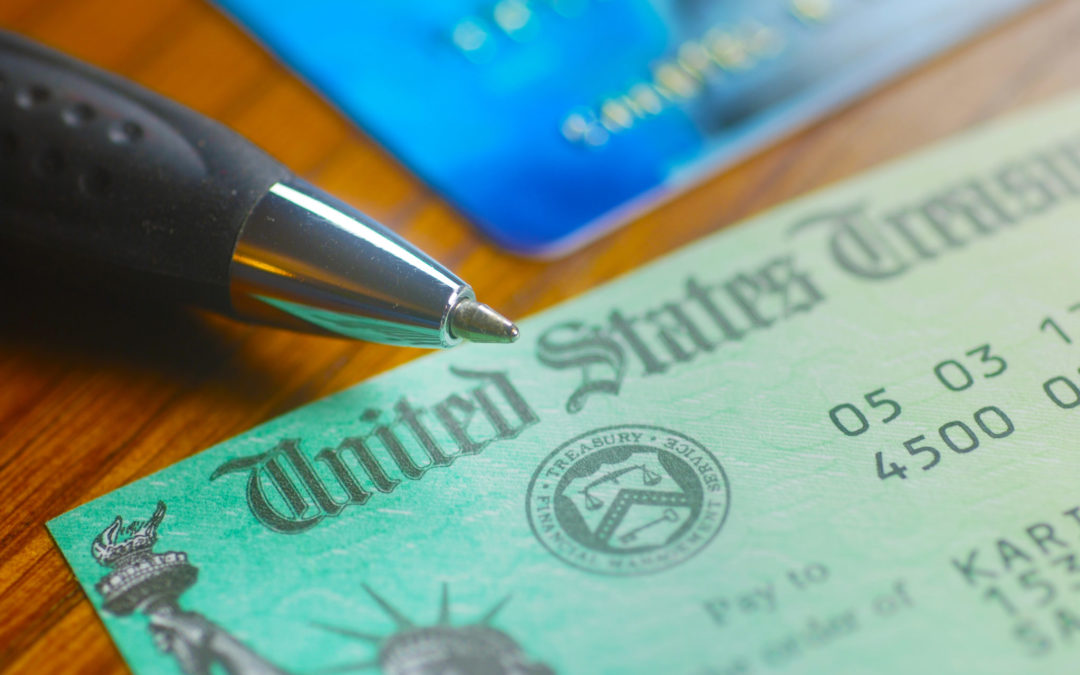We have been closely monitoring IRS information being released about the economic impact payments.
Here’s what you want to know:
Q: How will I receive the payment?
A: If you have filed a 2018 or 2019 US tax return, the IRS will review whether any US bank account information was present on the later of these two returns.
If US bank account information to facilitate a tax payment was present, the IRS will not use this information but will instead send a check to the address on that return.
If US bank account information to facilitate a tax refund was present, the IRS will deposit the economic relief payment to that account.
If no US bank account information was entered, a check will be sent to the address on the latest filed return (2018 or 2019).
If you do not file a return and you receive Social Security, the payment will be made in the same way that Social Security benefits are paid out.
If you do not file a return and do not receive Social Security you will receive a check.
If you do not have a US bank account you will receive a check[1].
For security reasons the IRS is unable to change bank account information should the account data listed on your 2018 or 2019 return be different to the account you would like the payment to be made to.
Q: Why do I get the message “status not available” when I use the IRS Get My Payment tool?
A: The IRS advises that this message is due to eligibility or not having enough information yet to provide a status.
The IRS is updating the Economic Impact Payments and Get My Payment sections of the website regularly. If you are receiving the “Status Not Available” message you should continue to try again once a day.
Q. Am I eligible for the economic impact payment?
A: The payments are available to qualifying individuals residing anywhere outside the US, provided the other qualifying criteria are met (see below for qualifying criteria).
Only US citizens, lawful permanent residents (green card holders) and other resident aliens who held those statuses during 2019 can collect the relief payments.
Q. Will I have to pay tax on the payment?
A: The payments are not taxable income in the US[2].
Q. My address has changed since I filed my last tax return. What should I do?
A: If your address is not current from your 2018 return, and you haven’t yet filed your 2019 return, you may file Form 8822 Change of Address.
If you have filed your 2019 return and your address has changed, you are unable to change it for the purpose of receiving the payment.
[1] Except for Social Security benefit recipients who receive those benefit by direct deposit to a non-US account.[2] We are currently working with Inland Revenue to determine treatment for NZ tax purposes.
Other things you should know:
- Beware of scammers who are attempting to collect payments owing to others.
- The IRS will never email, call or message you for account information.
- Do not file an individual paper US tax return. The IRS is currently unable to process these.
- You do not need to have to file a US tax return to qualify for the payment. There is a section on the IRS site to enable individuals who are not required to file[3], to apply for payment.
For further information on IRS operations, please visit our website: www.nzustax.com
A recap of information about the online tool and eligibility for the economic relief payments:
Taxpayers can check their eligibility for the payment, track the status of the payment, and enter US bank account details in order to receive a direct deposit from the IRS.
The IRS is now in the process of issuing payments, which are being automatically issued to taxpayers who:
- have filed a US individual income tax return for 2018 or 2019,
- had Adjusted Gross Income (AGI) of less than US $99,000 (single filers) US $198,000 (joint filers) on the later of the two above-mentioned returns, and;
- whose return contained a US bank routing and account number.
Payments are US $1,200 single filers US $2,400 (joint filers) for taxpayers who filed a 2018 or 2019 return with AGI reported of up to US $75,000/US $150,000.
An additional US $500 payment for each qualifying child[4] on your tax return being used to calculate your relief payment is available.
Filers with income over these thresholds and up to US $99,000/US $198,000 qualify for an abated amount.
[3] Individuals whose gross income was under the thresholds for filing (US $12,200 ($24,400 for married couples filing jointly)[4] Qualifying child is assessed using the child tax credit rules which includes various tests to determine eligibility for the child tax credit.
Taxpayers who do not meet the above requirements to receive an automatic payment may still qualify for the payment by checking their eligibility and entering their account information online. This category of taxpayers includes:
- Retirees.
- People who haven’t filed a 2018 or 2019 US tax return.
- People who have filed a 2018 or 2019 US tax return containing no bank account information.
Taxpayers who do not file, but who receive benefits such Social Security will automatically receive the payment. The IRS states that they do not need to enter payment information.
Taxpayers who do not qualify based on their 2018 or 2019 AGI, but meet the above-mentioned AGI thresholds for 2020 will be able to claim a credit on their 2020 return.
Taxpayers who do not have a US bank account will receive a paper check. It is envisaged that it could take several months due to current US conditions to arrive.
Go to https://www.irs.gov/coronavirus/economic-impact-payments to access the above information Alternatively please contact us for assistance.

